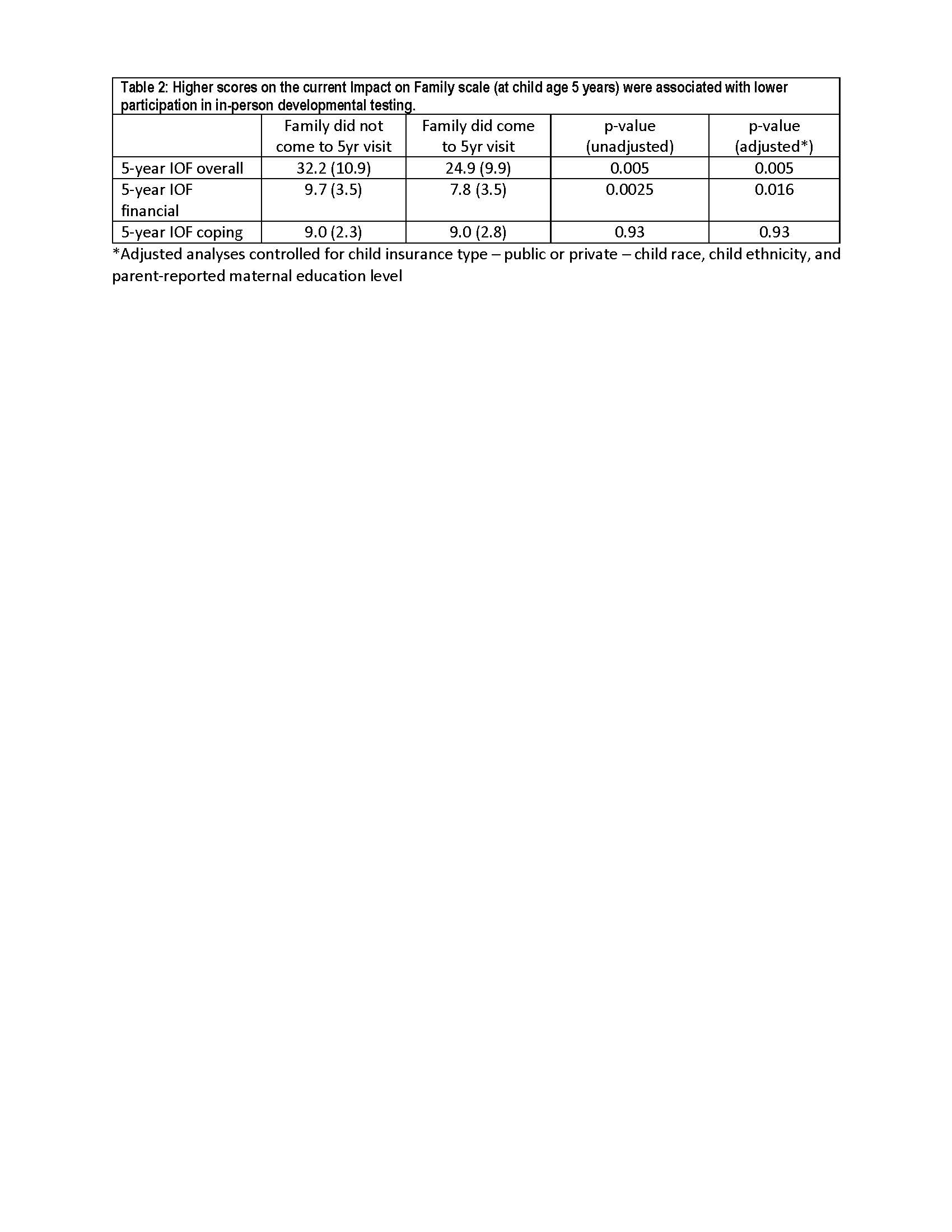Neonatal Neurology: Clinical Research
Neonatal Neurology 4: Clinical 4
101 - Towards equity in research participation: Association of financial impact with in person study participation
Publication Number: 101.336

Renee Shellhaas, MD, MS (she/her/hers)
Professor of Neurology
Washington University in St. Louis School of Medicine
St Louis, Missouri, United States
Presenting Author(s)
Background:
Disparities in study participation threaten generalizability of research findings, hinder innovation, and may compound health inequities. Study design elements can exacerbate barriers to participation.
Objective: We studied factors associated with enrollment and completion of in-person follow-up in a prospective multi-center study of neurodevelopment after neonatal seizures (NCT04337697).
Design/Methods:
Eligible families of neonates with acute provoked seizures had previously completed telephone and online survey follow-up through age 24 months. The childhood follow-up protocol included annual remote follow-up and a single in-person neurodevelopmental assessment at age 5 years. As an interim quality measure, we evaluated (1) factors related to enrollment in childhood follow-up and (2) whether Impact on Family score was associated with completion of in-person assessment.
Results:
Of 303 families enrolled in our original study, 167 (55%) consented to childhood follow-up. Enrolled families were more likely to be privately insured, report child’s race as white, and had higher maternal education levels than families who did not enroll. Otherwise, family, demographic, clinical profiles, and parent well-being measures at age 24 months were not associated with consent to participate in the childhood follow-up protocol (Table 1).
Of 94 families who have reached eligibility for in-person follow-up at age 5 years, 78 (83%) completed demographic and parent well-being measures and 64 (68%) presented for in-person testing. At 5 years, Impact on Family Overall and Financial subscale scores were worse for participants who did not complete in-person testing compared with those who completed in-person testing (Table 2). These results persisted after adjusting for insurance type, race, ethnicity, and maternal education.
Conclusion(s):
In this multicenter study, we demonstrate that beyond previously known factors related to racism and socioeconomic status, there is an association between validated measures of illness impact on family and finances and in-person clinical research participation. The findings highlight how structural barriers to research participation can threaten equity, accrual, and generalizability of research. Efforts to improve representation in participation, diversity in research populations, and rigor in study design call for creative solutions. Parent reported and teleconference-based assessments can provide cost-effective, valid, and inclusive solutions to this important priority and should be considered for studies that include neurodevelopmental outcomes..jpg)

